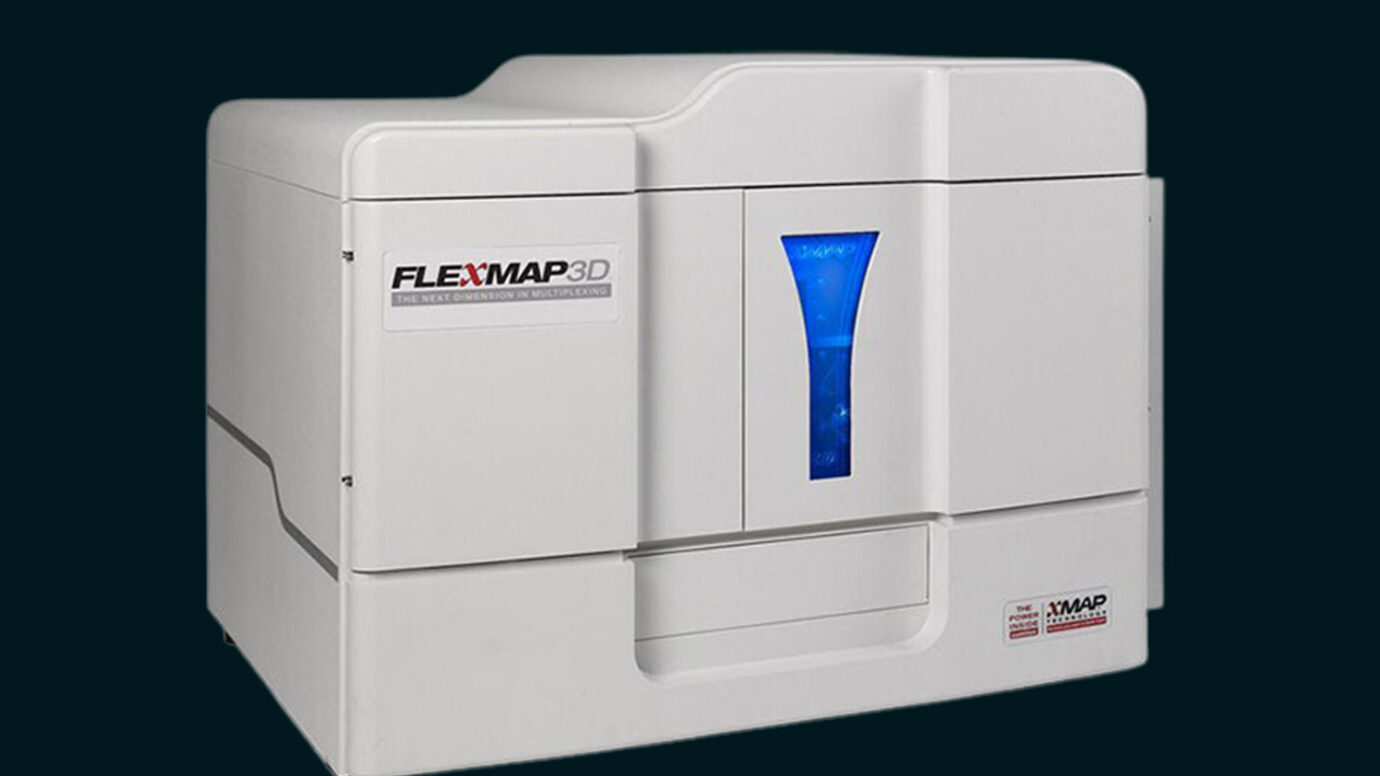For Multiplexing of Bead-Based Immunoassays
BioAgilytix uses Luminex’s innovative bead-based technology to perform many immunoassays under nonregulated and GxP conditions. We operate Luminex FLEXMAP 3D® systems at multiple locations globally with xPonent software that is 21 CFR Part 11 compliant for our regulated assay support. We maintain several data analysis software options as well to provide versatility during the drug development process.

Accuracy and reproducibility for multiplexing needs
BioAgilytix employs Luminex FLEXMAP 3D systems to run bead-based immunoassays. This platform give us the ability to multiplex many different assays simultaneously, providing greater information from a lower sample volume and in a shorter timeframe than required for traditional immunoassay methods.

Ideal Luminex Applications:
For simultaneously high plex and throughput
Luminex is ideal for bioanalytical applications that require both high plex and high throughput at the same time. It can yield significantly more information from limited-volume samples. While traditional ELISA and other technologies can also excel at high throughput applications, they are often limited in the total number of tests that can be plexed together into a single assay.
As a flow-based system, our Luminex platforms read and quantitate bead events individually, and can evaluate many markers on each sample. For example, a 30-plex kit can obtain up to 3,000 data points a day for 100 samples. BioAgilytix most frequently uses Luminex in our work with biomarkers. Our team has optimized and validated several cytokine, chemokine, growth factor, and biomarker assays ranging from known vendor protein panels (i.e., pro- or anti-inflammatory panels) to completely customized panels. We can also perform nonregulated analysis of antibodies to specific HLA haplotypes expressed by allogeneic cell therapy using Luminex.
Key Luminex Benefits:
Multiplexing and high speed and throughput
The multiplexing functionality Luminex enables reduces time, labor, and costs over traditional methods such as ELISA or Western blot. It is particularly advantageous for small sampling volumes. The dual laser-based reader delivers robust data from limited events. Throughput is also maximized, with multiple simultaneous analytes being detected in a single sample.
Luminex also offers strong versatility in that the single xMAP technology-based system performs a multitude of assay types, from nucleic acids and antigen-antibody binding, to enzyme, receptor-ligand, and other protein interactions.
Top benefits of Luminex Bio-Plex:
- Multiplexing
- High speed and throughput
- Small sample volumes
- Versatility and flexibility
- High accuracy
- Reproducibility

How the Luminex platforms work
Based on the principles of flow cytometry, Luminex FLEXMAP 3D analyzer combines advanced fluidics, optics, and digital signal processing with Luminex’s proprietary technology to perform discrete assays on the surface of color-coded beads known as ‘microspheres.’
Luminex platforms are built around three core technologies: the fluorescently dyed microspheres, or beads, provided from Luminex; a flow cytometer with two lasers and associated optics; and a high-speed digital processor able to efficiently manage digital output. The analyzer employs fluorescent methods for detection, using the bead sets to identify the analytes, and detection antibodies to measure the quantity of analyte. The use of different colored beads allows for simultaneous detection of many analytes in the same sample, and laser excitation is employed to determine analyte concentration.
The main advantages of the Luminex FLEXMAP 3D system are the ability to multiplex up to 500 analytes with minimal sample volume and automation to support high-throughput bioassay applications.